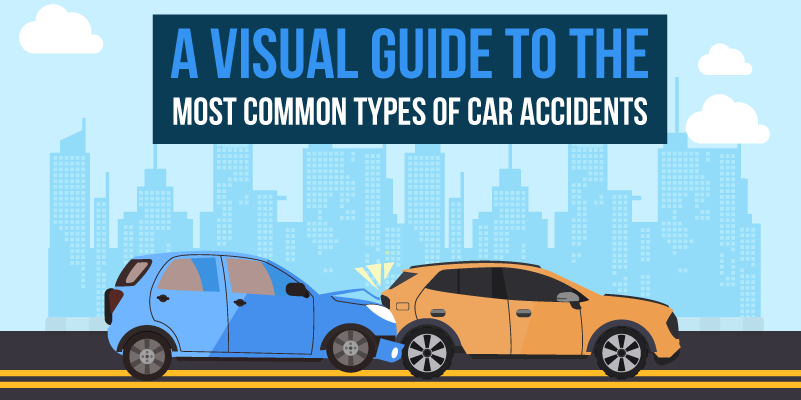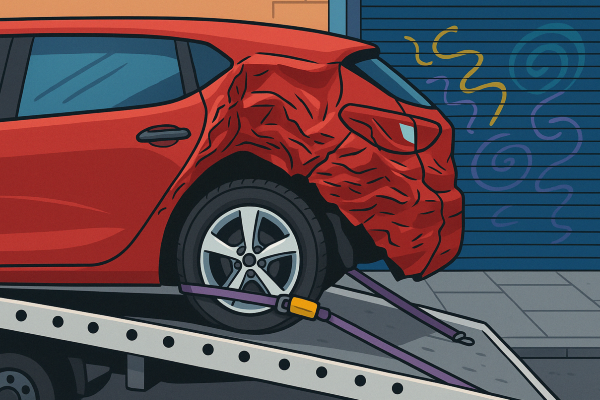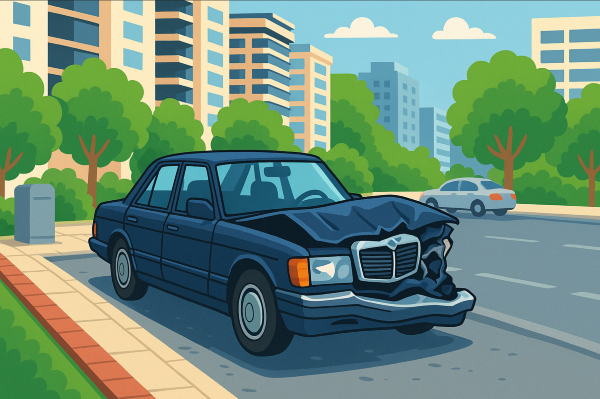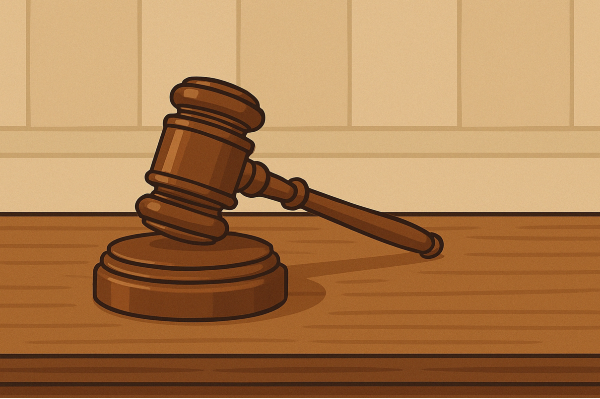
If you’ve never been in a car accident, it’s difficult to grasp the shock, confusion, and sheer force of the moment. One second, everything is normal — then suddenly, metal crunches, tires screech, and your world turns upside down. It happens too fast to process, and only after some time do you start piecing together what went wrong.
Hopefully, you never have to experience that. But the reality is that car accidents happen every day in California, and you never know if or when they will happen to you. Knowing the common types of crashes and what to do after a car accident can help you stay alert and react appropriately on the road.
This visual guide breaks down the most frequent car accidents, their causes, and what to do next if you ever find yourself involved in one. The more you understand, the better prepared you’ll be.

8 Most Common Types of Car Accidents
Car accident details can feel like a blur, but understanding the most common types of crashes can help you stay in the moment and take the right steps for safety, legal, medical care, and insurance purposes. Here’s a breakdown of the most frequent car accidents and what causes them.
1. Rear-end collision
A rear-end collision happens when one vehicle crashes into the back of another.
These accidents include everything from minor dings to serious crashes that cause whiplash and major vehicle damage. They are among the most frequent car accidents, especially in heavy traffic. Even at low speeds, the impact can push a car forward, which may cause a chain reaction.
Most collisions of this type occur when a driver follows too closely and lacks time to react to abrupt changes on the road. Sudden stops, distracted driving (texting, eating, adjusting the GPS, etc.), and bad weather can make it harder to brake in time.
Example: A driver glances at their phone and doesn’t notice traffic has stopped, slamming into the car ahead.

2. Side-impact (T-bone) collision
When the front of one vehicle crashes into the side of another, it is considered a T-bone collision. These crashes often happen at intersections while one vehicle is attempting to turn and another is driving straight. The sides of a car offer less protection, which can endanger lives.
T-bone collisions occur when drivers don’t yield or run red lights. The injuries can be severe, particularly to passengers on the struck side. High-speed impact can also roll a car onto its side. Unfortunately, speeding is a leading cause of most crash types.
Additionally, aggressive driving can contribute to T-bone crashes. Meanwhile, sun glare or other causes of poor visibility can cause drivers to misjudge another car’s right of way.
Example: A driver runs a red light and crashes into the side of a car legally passing through the intersection.
3. Head-on collision
A head-on collision occurs when cars hit each other front-first, often at high speeds. Though less common, these crashes are among the deadliest due to the sheer force of the impact.
Many things could happen when a driver drifts into oncoming traffic due to drowsiness, distraction, or intoxication. Wrong-way driving—like entering a highway ramp incorrectly—can also cause crashes.
Heavy rain, fog, and other poor weather conditions may reduce visibility and make staying in the correct lane harder. Some accidents happen when drivers swerve suddenly to avoid an obstacle, only to find themselves in the path of an approaching vehicle.
Example: A drowsy driver drifts into the opposite lane and collides with an oncoming vehicle.
4. Sideswipe accident
A sideswipe accident happens when two vehicles traveling parallel scrape against each other. While often minor, they can cause loss of control, spinouts, or rollovers at faster speeds.
Even at low speeds, these crashes can lead to costly repairs for dents, scratches, or broken mirrors. They frequently occur when a driver changes lanes without using turn signals or checking blind spots.
Distracted driving can also lead to an unintentional drift into another lane. In some cases, road rage causes one driver to deliberately push another out of their lane.
Example: A car merges without checking its blind spot and scrapes the side of another vehicle.

5. Single-vehicle accident
Even though a single-vehicle accident involves only one car, it can cause serious damage or injury – especially if there are multiple people in the vehicle. It happens when a vehicle collides with a stationary object like a tree or guardrail or runs off the road. These accidents are common on winding roads and highways.
Speeding, slippery roads, and bad weather reduce control. Drowsy driving or medical emergencies are also possible causes. Swerving to avoid obstacles may also lead to losing control.
Example: A driver skids on a wet road and crashes into a guardrail.
6. Multi-vehicle pileup
In a multi-vehicle pileup, several cars crash into each other—often in a domino effect. These accidents are most common on highways and freeways, where vehicles travel at high speeds and have little time to react. The severity of injuries and damage escalates as more vehicles become involved.
The initial crash is often caused by sudden braking, poor visibility, or reckless driving. Fog, heavy rain, and icy roads can make seeing or stopping in time difficult. Distracted driving can also reduce reaction time.
Example: A sudden stop on a foggy highway produces a chain reaction of crashes.
7. Hit-and-run accident
A hit-and-run accident involves a driver causing a crash and fleeing without stopping. Fleeing after an accident is illegal— the at-fault driver can face serious legal consequences. Unfortunately, victims often face difficulty in identifying the responsible party.
Some hit-and-run drivers panic and leave due to fear of consequences, while others may be uninsured or driving under the influence. In busy parking lots, drivers sometimes hit parked cars and drive off, assuming no one had seen them.
Example: A driver clips a parked car and speeds off without leaving any contact information.
8. Parking lot accident
Parking lot accidents occur when vehicles are reversing, pulling into or out of spaces, or navigating tight turns. While these crashes are rarely life-threatening, they can lead to costly repairs and insurance claims. Pedestrians in parking lots are also at risk.
Major contributors include distracted driving, crowded lots, and limited visibility. In the latter, drivers backing out of spaces may fail to see approaching cars or pedestrians. Rushing to find a parking spot can also lead to poor judgment, while distractions like adjusting GPS or looking for an open space increase the risk.
Example: Two cars back out of their parking spots simultaneously and collide.
What to Do After a Car Accident
A car accident can leave you feeling shaken and uncertain. While you can do everything to avoid car accidents, sometimes the choice isn’t up to you. Here’s what to do immediately after an accident to ensure the best outcome.
1. Make sure everyone’s safe
Your priority is to check yourself and others for injuries. If you can move, check on passengers and anyone involved in the accident. If the crash happened in a high-traffic area, try to relocate to a safe spot like the roadside or sidewalk without putting yourself in further danger.
2. Assess immediate threats
Beyond injuries, look for hazards that could make the situation worse. Fuel leaks, fire risks, or oncoming traffic can pose serious harm. If your car is operable, turn on your hazard lights to alert other drivers. If you suspect a fire or gas leak, immediately get everyone away from the vehicle.
3. Contact emergency services
Call 911 as soon as possible. Even in minor accidents, a police report can be an official record of what happened. If there are injuries, request medical assistance immediately. Police officers will also help manage traffic and ensure the situation doesn’t escalate.
4. Provide aid if possible
If you are uninjured and it’s safe, offer help to others involved in the accident. However, avoid moving anyone who appears to have serious injuries unless there is an immediate danger, such as a fire. Providing reassurance and staying with injured parties until medical help arrives can make a difference.
5. Document the scene
Gather as much evidence as possible while waiting for authorities. Take clear photos of the following:
- Vehicles
- License plates
- Road conditions
- Traffic signals
- Visible injuries
After, exchange insurance and contact information with the other driver. If there are witnesses, ask for their details as well.
6. Avoid making public statements
Pay attention to what you say at the scene. Avoid admitting fault, speculating on the cause of the accident, or apologizing—even casual remarks can be used against you later.
Likewise, refrain from posting about the accident on social media, as insurers or legal representatives could use those statements against your claim.
Wait until you consult a lawyer to avoid exposing yourself. You can proceed only after you’ve asked the right questions and understood the best course of action.

Know Your Rights and Options
No matter the car accident type, your top priority is safety: checking for injuries, seeking medical help, and securing the scene. Once the immediate danger passes, be ready to face medical bills, lost wages, and insurance battles. That’s where RMD Law can provide valuable guidance.
Our personal injury lawyers will handle your car accident case and fight to give you rightful compensation. We offer free case evaluations to discuss your legal options.
Injured in an accident? Contact RMD Law today for a free consultation or call (949) 828-0015.
- California’s New Jaywalking Law and Its Impact on Pedestrian Accident Claims - April 17, 2025
- A Visual Guide to the Most Common Types of Car Accidents - April 15, 2025
- Top 7 Mistakes To Avoid When Collecting Motorcycle Accident Evidence - April 10, 2025




